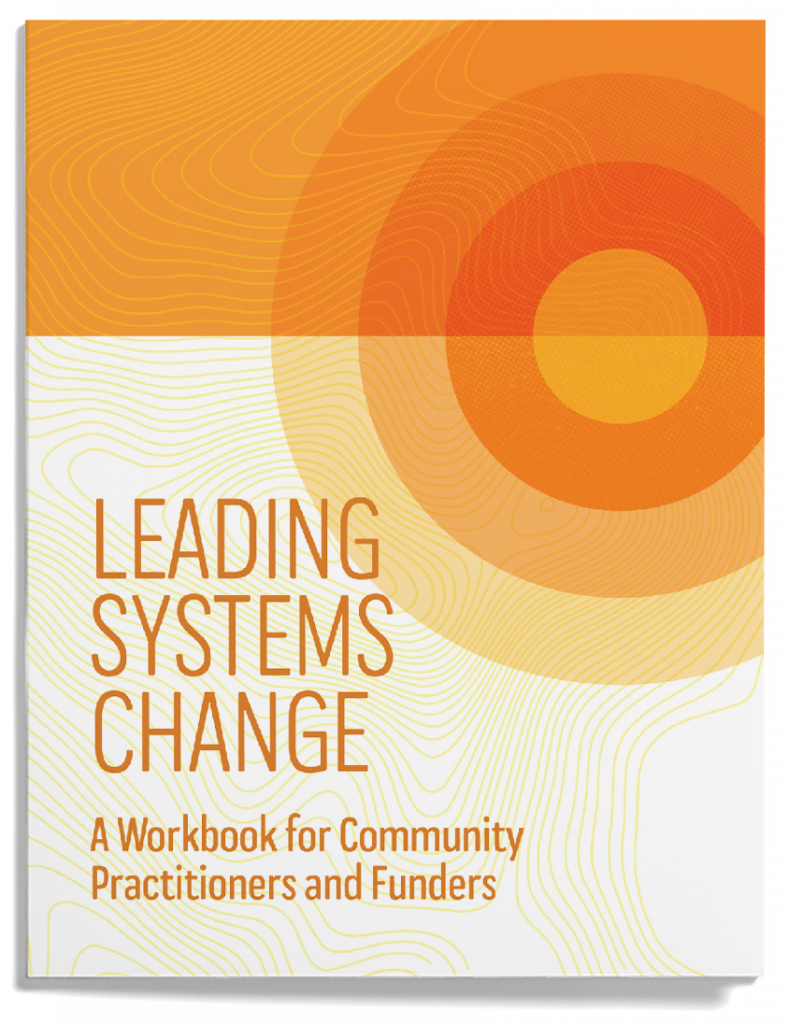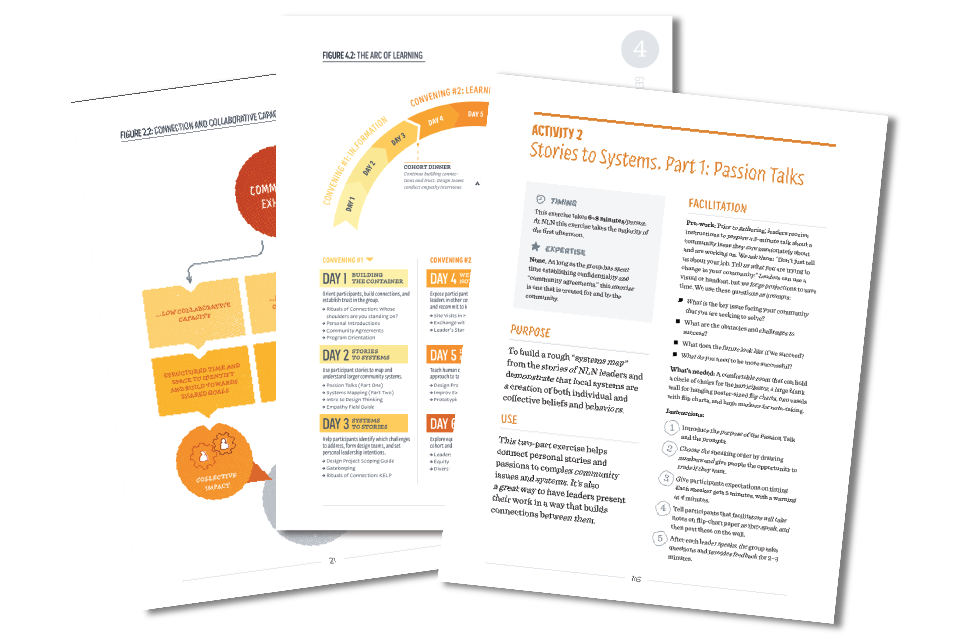
FOR ANYONE LEADING COMMUNITY CHANGE, THIS BOOK IS FOR YOU
A toolkit for 21st century social change
What’s Inside
This workbook is broken down into nine different chapters. These chapters are intentionally designed to help provoke thought and facilitate discussion for many different types of system change concepts. The first four chapters tell of the who, why and how of this book. Chapters 5, 6, and 7 educate about the Arc of Learning. The remaining chapters discuss how to take the knowledge, resources and tools you have as a leader or funder and to put it to action.
Stay Connected

The New Leadership Network, funded by the James Irvine Foundation, brings together diverse emerging leaders across issues, sectors and generations to learn, build relationships, collaborate and innovate for a better future for their region.
The Network launched in California’s Fresno County in 2013 and in Stanislaus County in 2016.

Open Impact is a strategic advisory firm partnering with philanthropic leaders to envision, design, and accelerate the work of social change.

The With/In Collaborative works alongside leaders to re-imagine, re-design and re-align the systems that no longer work for our communities. We work nationally with visionary conveners, funders, networks and community leaders.
WITH GRATITUDE TO THE FUNDERS OF THIS WORKBOOK




